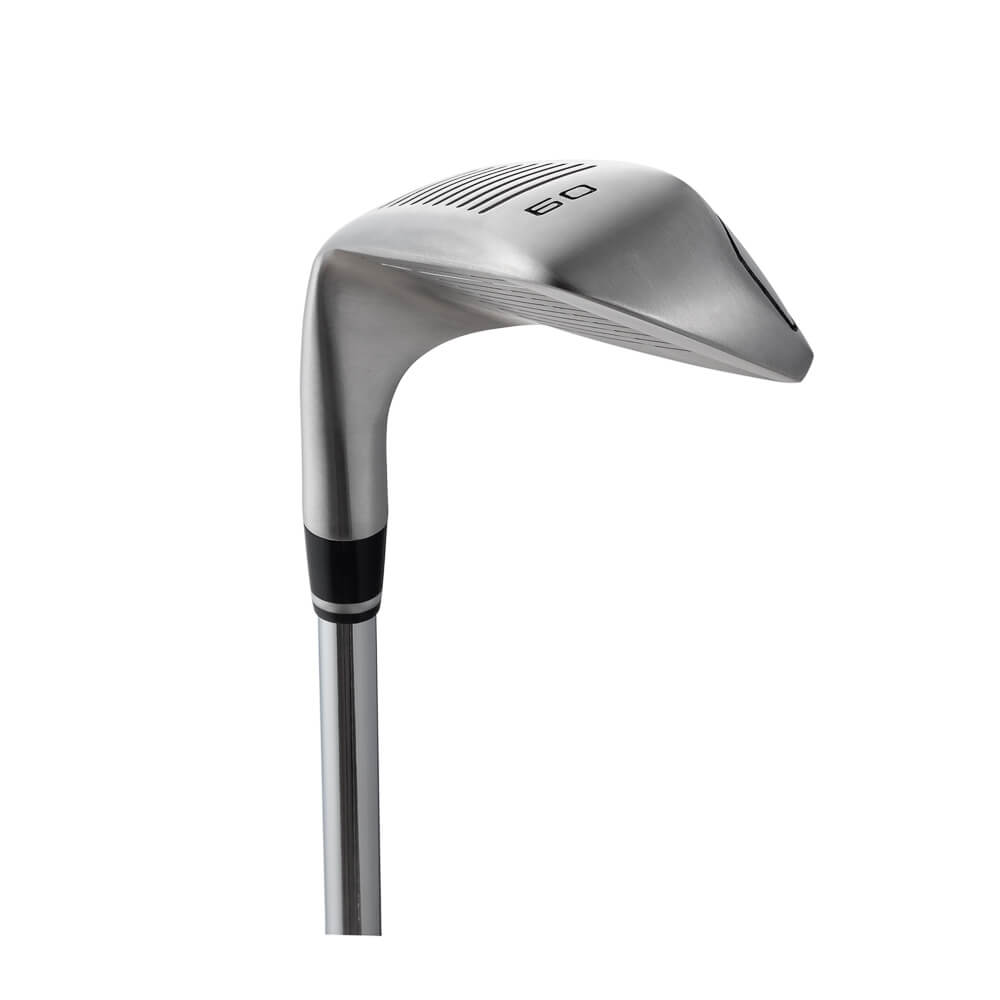A Chipper degree refers to a level of golf skill, typically indicating a player who is proficient at chipping. Chipping involves short, controlled shots around the green.
Golf requires mastering various techniques, and chipping is a crucial skill. A player with a Chipper degree excels in these short, precise shots. Chipping is essential for lowering scores and improving overall performance on the course. This skill involves hitting the ball with a lofted club, ensuring it lands softly on the green and rolls towards the hole.
Achieving proficiency in chipping can significantly impact a golfer’s game, making it an important focus for both amateurs and professionals. Regular practice and proper technique are key to becoming an adept chipper.

Credit: www.amazon.com
Introduction To Chippers
Golfers often wonder about the role of different clubs in their game. One such club is the chipper. This club can help improve short game skills. Let’s dive into its history, design, and function.
History Of Chippers
The chipper dates back to the early 1900s. Golfers needed a club to easily lift the ball. Manufacturers designed the chipper for this specific purpose. Over time, its popularity grew among amateur players.
Basic Design And Function
The chipper looks like a mix of a putter and a wedge. It has a loft of 30 to 37 degrees. This loft helps the ball lift off the ground. The club’s design ensures a smooth, controlled chip shot.
| Feature | Details |
|---|---|
| Loft | 30 to 37 degrees |
| Length | Similar to a putter |
| Weight | Balanced for easy control |
- The chipper helps with short-distance shots.
- It provides better control than a wedge.
- Ideal for beginners and high-handicap golfers.
Understanding the chipper can improve your short game. Its unique design offers precise, controlled shots. Adding a chipper to your bag can enhance your overall performance.

Credit: www.mazelgo.com
Types Of Chippers
Chippers come in various types, each suited for different needs. Knowing the types can help you choose the right chipper for your tasks. Here, we explore the two main types: Electric Chippers and Gas-Powered Chippers.
Electric Chippers
Electric chippers are ideal for light-duty tasks. They are powered by electricity, making them quieter and easier to maintain.
- Quiet Operation: Electric chippers produce less noise.
- Low Maintenance: No need for oil changes or fuel.
- Eco-Friendly: They produce no emissions.
Electric chippers are perfect for small yards and gardens. They can handle branches up to 1.5 inches in diameter.
Gas-powered Chippers
Gas-powered chippers are more powerful and can handle tougher tasks. They are ideal for larger properties and heavy-duty work.
- High Power: Capable of chipping larger branches.
- Portability: No need for an electric outlet.
- Versatility: Can be used in remote locations.
Gas-powered chippers can handle branches up to 4 inches in diameter. They are perfect for large yards and professional use.
Key Features
Understanding the key features of a chipper is essential for choosing the right one. Let’s dive into the crucial aspects that make a chipper effective and efficient.
Blade Configuration
The blade configuration in a chipper determines how it cuts materials. Different chippers have varying blade numbers and arrangements. Some chippers use a single blade, while others use multiple blades. Multiple blades often result in finer chips and faster processing. The material of the blade also matters. High-quality steel blades last longer and stay sharp.
Power And Capacity
The power and capacity of a chipper affect its performance. Chippers come with different power sources like gas, electric, and diesel. Gas-powered chippers are strong and suitable for heavy-duty tasks. Electric chippers are quieter and better for small yards. The capacity of a chipper indicates how much material it can handle. Larger capacities mean more efficient work. Always check the motor size and horsepower for a clear understanding.
Choosing The Right Chipper
Choosing the right chipper can be a daunting task. With so many options available, it’s essential to assess your specific needs and compare different models. This guide will help you make an informed decision. Let’s dive into the details.
Assessing Your Needs
Before picking a chipper, assess your needs first. Understand the type of wood you will chip. Consider the size of branches and the frequency of use. Are you working with small garden debris or larger branches? This will dictate the power and size of the chipper.
Here are some points to consider:
- Type of Material: Softwood or Hardwood?
- Branch Size: Small twigs or large branches?
- Frequency of Use: Occasional or regular usage?
Comparing Models
Once you know your needs, compare different models. Look at specifications, features, and user reviews. Here are some important factors to consider:
| Factor | Details |
|---|---|
| Power Source | Electric or Gas |
| Horsepower | Higher HP for tougher jobs |
| Chipping Capacity | Max branch size it can handle |
| Weight and Portability | Ease of movement |
Check out these features:
- Safety Features: Does it have emergency stop options?
- Ease of Maintenance: How easy is it to clean and maintain?
- Warranty: What kind of warranty does the manufacturer offer?
By evaluating these aspects, you can choose the right chipper for your needs. Make sure to read user reviews and expert opinions as well. Happy chipping!
Using A Chipper Safely
Using a chipper can make yard work easier. But it’s important to stay safe. Follow these tips for safe operation.
Safety Gear
Always wear proper safety gear when using a chipper. This includes:
- Safety glasses to protect your eyes
- Ear protection to guard against loud noise
- Gloves to keep your hands safe
- Sturdy shoes to protect your feet
Loose clothing can get caught. Wear snug-fitting clothes.
Proper Operation Techniques
Learn the right way to use a chipper. Follow these steps:
- Read the manual before using the chipper.
- Check the area for obstacles.
- Keep children and pets away from the work area.
- Feed branches slowly into the chipper.
- Use a push stick for small branches.
- Never reach into the hopper with your hands.
Turn off the chipper before clearing any jams. Ensure the machine is completely stopped.
Maintenance Tips
Regular maintenance ensures your chipper remains in top condition. Proper care increases efficiency and extends the lifespan of your machine. Here are some essential maintenance tips.
Routine Inspections
Performing routine inspections is crucial. Check the chipper before and after each use.
- Blades: Inspect blades for wear and damage.
- Bolts and Nuts: Ensure all bolts and nuts are tight.
- Oil Levels: Check the oil levels in the engine.
- Fuel System: Look for leaks in the fuel system.
Regular inspections prevent major issues. They keep your chipper running smoothly.
Troubleshooting Common Issues
Common issues with chippers can be resolved easily. Below are some troubleshooting tips.
| Issue | Solution |
|---|---|
| Engine Won’t Start | Check fuel, spark plug, and air filter. |
| Blades Not Cutting Well | Sharpen or replace the blades. |
| Machine Vibrates Excessively | Tighten all bolts and check for debris. |
Following these tips will help you maintain your chipper. Keep a log of all maintenance activities. This log will help you track the health of your machine.
Environmental Benefits
Chippers are useful tools for the environment. They help manage garden waste and improve soil health. Let’s explore their benefits.
Reducing Waste
Chippers help reduce garden waste. They turn branches into small chips. This reduces the amount of waste sent to landfills.
Fewer trips to the landfill mean less pollution. This helps keep our planet clean.
Composting And Mulching
Chippers make composting easier. They break down leaves and twigs quickly. Smaller pieces compost faster and better.
Mulch from chippers helps retain soil moisture. It also suppresses weeds and adds nutrients to the soil.
Using mulch reduces the need for chemical fertilizers. This is good for the environment and our health.
| Benefit | Description |
|---|---|
| Reducing Waste | Less garden waste in landfills. |
| Composting | Faster and better composting. |
| Mulching | Improves soil health and reduces weeds. |

Credit: www.amazon.com
Advanced Techniques
Mastering advanced techniques with a chipper can significantly boost performance. These techniques ensure precise cuts and efficient work. Let’s explore some essential methods.
Optimizing Performance
Optimizing the performance of your chipper involves several key steps:
- Regular maintenance: Clean and oil the blades frequently.
- Sharpening: Keep the blades sharp for efficient cutting.
- Correct feed rate: Feed wood at a steady pace.
- Proper alignment: Ensure the wood is aligned correctly.
Maintaining your chipper ensures long-lasting performance and safety.
Specialized Applications
Chippers are versatile tools with many specialized applications:
| Application | Description |
|---|---|
| Landscaping | Create mulch for garden beds. |
| Forestry | Clear brush and small trees. |
| Construction | Dispose of wooden waste efficiently. |
Using a chipper for specialized tasks enhances productivity and efficiency.
Remember, mastering these advanced techniques will make your work easier and faster. Always follow safety guidelines for the best results.
Frequently Asked Questions
How Many Degrees Is A Chipper?
A chipper usually has a loft angle of 30 to 37 degrees. It’s ideal for short, controlled shots.
What Angle Is A Chipper?
A chipper typically has an angle of 30 to 37 degrees. This angle helps lift the ball easily.
Is A 37 Degree Chipper Legal?
Yes, a 37-degree chipper is legal under USGA rules. It is considered a standard golf club.
What Degree Is A Chipping Iron?
A chipping iron, or wedge, typically has a loft between 45 to 60 degrees. The most common is around 50 degrees.
Conclusion
Understanding the degree of a chipper can enhance your golf game. Choose the right loft based on your needs. Improve your short game with practice and the proper equipment. Mastering the chipper’s degree will lead to better accuracy and lower scores.
Happy golfing!





